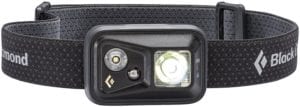Daylight saving time ends tomorrow, and the good news is, you’ll gain an extra hour of sleep. But on the flip side, researchers found that walkers are three times more likely to be hit and killed by cars at 6:00 PM during the weeks after the switch. Here are some fitness tips and why you need to change your workout along with your clocks.

Health Effects from Losing Daylight
When daylight saving time ends, you’ll lose an hour of daylight in the evening.
- Drivers seem to go through a period of adjustment when it gets dark earlier.
- The evening rush hour will mean more time spent in the dark which is already dangerous.
- A 2001 University of Michigan study found that 65 pedestrians were killed by cars one week prior to changing back the clocks. However, one week following the time switch, 227 pedestrians were killed (3.5 times more are killed).
- Risk of being killed by a car increased 186 percent for every mile walked according to researchers from Carnegie Mellon University.
- The risk is lower at 6:00 AM vs 6:00 PM, but that’s because there aren’t as many walkers in the early morning. Still, those that live don’t offset the ones that are killed.
Change Your Workout with Your Clocks
1. Stick to Well-Lit Roads, Sidewalks, and Paths: Stay away from areas that are darker, less traveled, and off-road. Seek out paths that are free of cars and stay on sidewalks.
 2. Wear a Head Lamp: Lights make you more visible. Carry a flashlight or wear a head lamp. The light will also help prevent falls or twisting an ankle as it’ll be easier to see ruts and uneven walkways when on dark surfaces/terrain.
2. Wear a Head Lamp: Lights make you more visible. Carry a flashlight or wear a head lamp. The light will also help prevent falls or twisting an ankle as it’ll be easier to see ruts and uneven walkways when on dark surfaces/terrain.
3. Wear reflective gear. Put yourself in the driver’s seat. What would help you see a pedestrian on the road? Walkers, joggers, and runners (cyclists too) should wear lots of reflective gear, such as vests, belts, hats, arm bands, etc. If you don’t have that, adhere high visibility reflective tape to clothing from head to toe. Some running apparel already has reflective accents sewn in.
4. Go Against Traffic: Always move against the direction of traffic. You need to be able to get out of the way if a car is coming toward you.
5. Tune In to Your Surroundings: As much as you might like to listen to your favorite tunes while working out, ditch the headphones. You need to be able to hear what’s going on around you, such as oncoming traffic, car horns, sirens, or someone calling out to you. If you can’t do without your tunes, plug into one ear only.
6. Carry Your Phone and I.D.: This is a good idea whether it’s dark or light out. You may need to call for help or may even get lost. Include medical I.D.
7. Don’t Go Alone: Not only does a buddy help keep you company, accountable, and motivated, there is safety in numbers — especially if you’re out in the dark. You’ll also have someone who can get help if you get injured or there’s an accident.
8. Switch to Sunrise Workouts: You may want to switch your walk/jog/run to early mornings instead of evenings after work. By opting for a sunrise workout now, you’ll gain an hour of extra sunlight.
When sunlight hits the optic nerve, melatonin levels shut down. That’s because the light signals the pineal gland* in the brain to stop producing melatonin. You’ll be more awake. (Melatonin is the hormone is responsible for helping you sleep.)
Sunlight also triggers the release of serotonin (hormone in your brain) which is associated with boosting mood and feeling calm and focused.
*Pineal (pea-sized) gland located just above the middle of the brain. Pineal gland synthesizes and secretes melatonin. During the day, the pineal is inactive.
9. Keep Gear Handy: Organize workout gear and set it in one place, such as in a caddy by the the door. You’ll be more apt to take all your essentials with you.
![]() Karen’s Fit Tip: Be visible. Be aware. Be prepared.
Karen’s Fit Tip: Be visible. Be aware. Be prepared.


